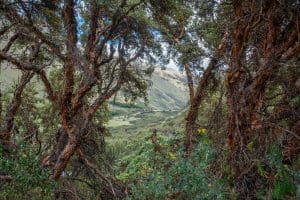New Study: What makes a forest restoration project truly successful?

A new study, co-authored by Acción Andina President Constantino “Tino” Aucca Chutas, dives deep into the social, economic, and governance factors that determine the success of high Andean forest restoration efforts.
Key Insights from the Study:
💧Water security drives restoration – Local communities overwhelmingly restore forests to protect and improve water sources, reinforcing the Andean concept of ‘Sowing and Harvesting Water.’
🤝Success is social, not just ecological – The most effective restoration projects thrive due to community participation, conservation agreements, and governance models that ensure long-term impact.
🌲Restoration isn’t one-size-fits-all – Projects succeed when they balance native forest reforestation, agroforestry, and grassland restoration to strengthen hydrological benefits.
🌏Beyond trees: protecting entire ecosystems – Community members emphasize the need to restore wetlands, peatlands, and grasslands alongside forests to boost water retention and long-term sustainability.
📊Restoration models matter – The study identifies three approaches: payment-based models, capacity-building models, and hybrid models, each with different long-term impacts on conservation and livelihoods.
Why does it matter, though? As the world ramps up large-scale reforestation efforts, this research highlights that local knowledge, governance, and community benefits are just as important as planting trees. Acción Andina has long championed this holistic approach—ensuring that restoration efforts support both people and ecosystems in the high Andes.
Read the full study here: bit.ly/40Kl41S
See Acción Andina’s work in action: https://accion-andina.org/

